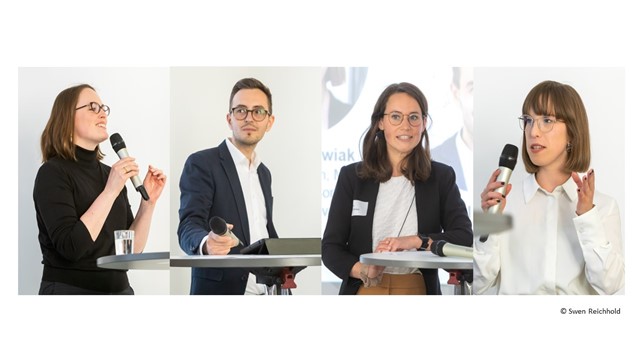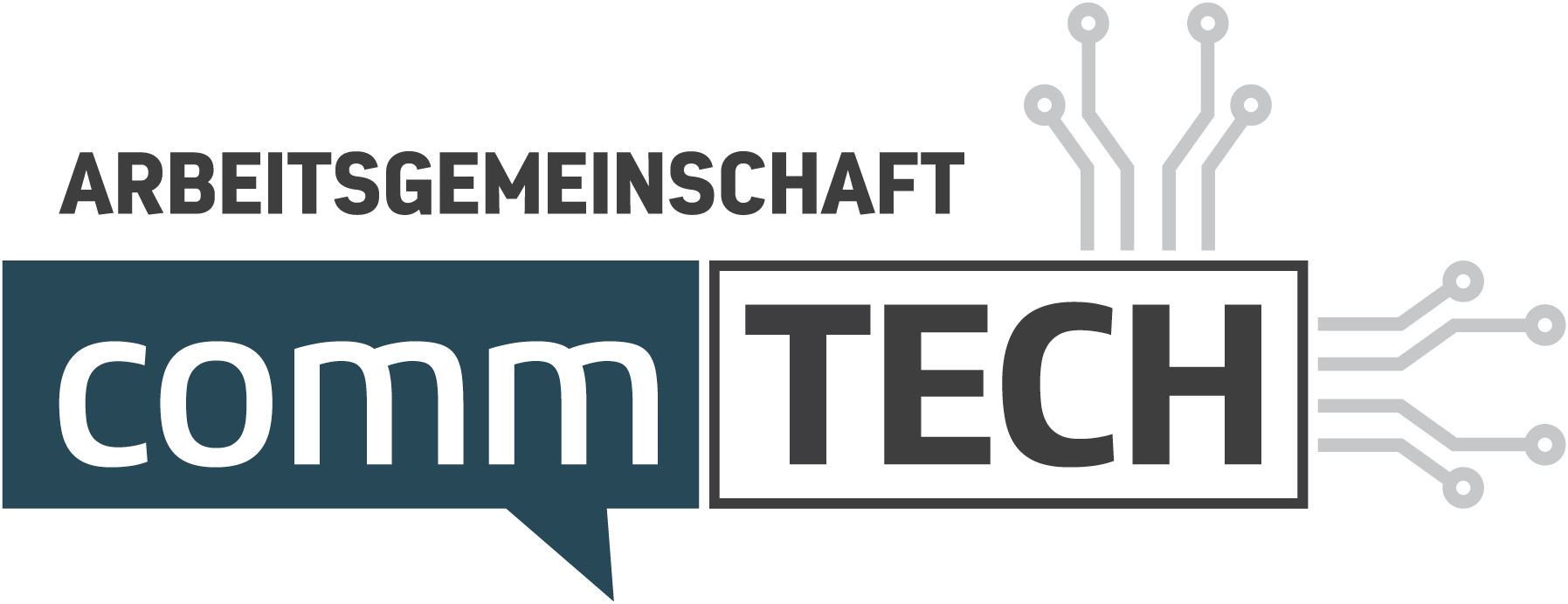- 1. June 2022
- Posted by: Die Redaktion
- Category: NEWS

Where is CommTech headed?

Authors: Jana Brockhaus, Meike Ostermeier, Lea Waskowiak and Manuel Wecker
The use of digital technologies, challenges in internal workflows or the implications of the stakeholder journey: topics that were discussed at the University of Leipzig at the beginning of April under one question: Where is the journey going with CommTech?
At the alumni event REFRESH 2022 of the Institute of Communication and Media Studies, not only the latest research results of the chair were presented, but also the topic CommTech, as a central trend in the communication industry, was critically discussed. The conference took a look at the research on the topic as well as the challenges in everyday work from different perspectives. Jana Brockhaus (University of Leipzig), Meike Ostermeier (Finsbury Glover Hering), Lea Waskowiak (Covestro) and Manuel Wecker (Unicepta) were among the participants. The panel participants recorded their key learnings for the CommTech WG.
“CommTech in Application”
While the professional discussion on data in the communications industry has long been limited to the buzzword communications controlling, the term Comm-Tech promises a much broader and integrated perspective on the topic. The discussion will focus on the use of digital technologies along the entire communications value chain. Thus, CommTech is often (still) thought of too briefly by many communication managers and only related to the analysis or evaluation of communication activities. Data can be used at any point in the management process – for steering, identifying opportunities and risks, and providing impetus.
This requires analytical process thinking. Communications units need to break down their services and tasks into processes in order to identify optimization potential through technology. The much-experienced introduction of countless tools and software brings little progress without having a concrete process in mind that can be meaningfully supported by the tool. In addition, one tool will not fix a suboptimal process.
Last but not least, tools help above all to reduce complexity and to systematize data. In order to then interpret insights in a targeted manner and take them into account in communicative action, one thing remains indispensable: the human factor. Only if courageous treasure hunters – pioneers and data enthusiasts – drive the topic forward in organizations can they succeed in staying ahead of the internal competition with other departments.
“What’s next?”
Communications today sits on a vast treasure trove of data that needs to be mined. It can shine here (and make a key contribution to its own reputation) by sharing data and insights with internal stakeholders and other departments. But communications managers are increasingly faced with new challenges: Minute-by-minute publications and 24/7 global reporting on fragmented channels make the task of deriving insights ever more demanding. Those who continue their education here, follow trends and keep their finger on the pulse are well equipped. The first steps have already been taken academically as well: universities and colleges will expand their educational offerings on technologies and data literacy in the area of communications management.
We are looking forward to future developments in this topical and relevant area of the communications industry.

